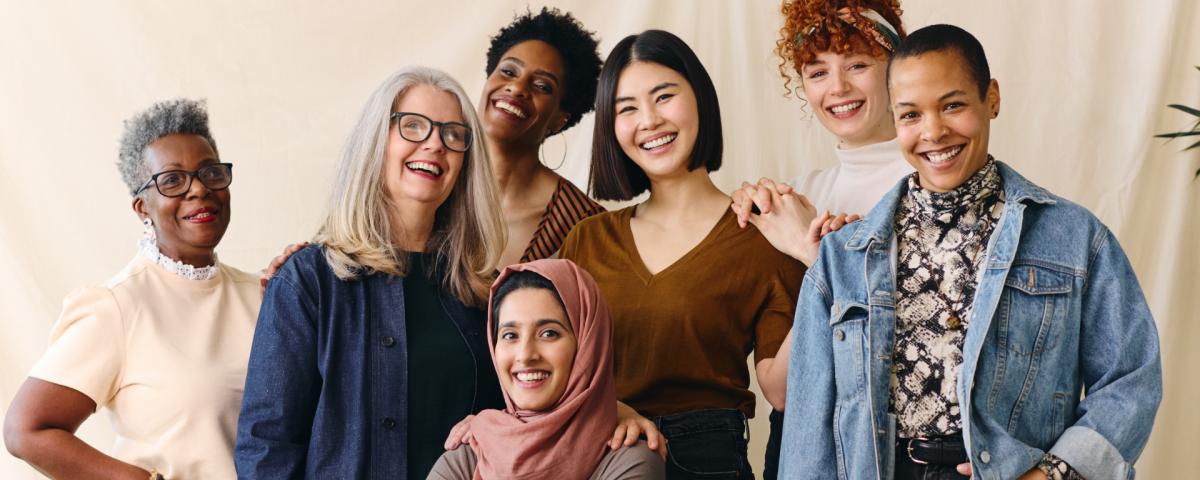
Intellicast S5E31 – A Conversation About Quality with Katrina Noelle and Casey Bernard of Know Research
October 18, 2022
Intellicast S5E32 – Talking Data Quality and ESOMAR Re-Elections with Lisa Wilding-Brown of InnovateMR
October 20, 2022You may have heard about Virgin Atlantic’s new uniform policy, which no longer requires gendered uniforms. It also allows crew members to wear pronoun badges if they choose. This new initiative demonstrates a commitment to diversity and inclusion, as well as impacts public perception of their brand. So, what other brands do consumers view as diverse and inclusive? We analyzed perceptions of several high-profile brands from our research-on-research to find out.
Overall
Overall, the Democratic Party is the most diverse and inclusive out of the brands we analyzed. It is considered 18% more diverse and inclusive than the NRA, which is least likely to be considered diverse and inclusive.
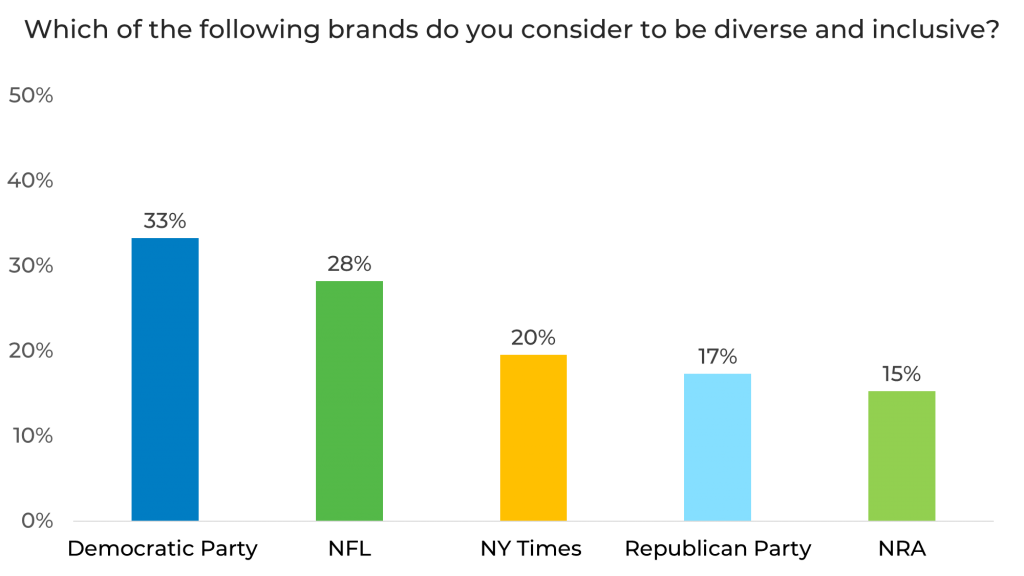
Democratic Party
Age
When looking at the Democratic Party by age, we see a trend that the older a person is, the more likely they are to consider the Democratic Party to be diverse and inclusive. People age 65+ are 12% more likely than those age 18-24 to consider the Democratic Party diverse and inclusive.

Panel
When it comes to panel, we see up to a 12% difference in perception of the Democratic Party as diverse and inclusive. Panel P has the highest percentage of people who consider the Democratic Party to be diverse and inclusive, while Panel K has the lowest. These differences can be due to variation in panel makeup, management, and more.
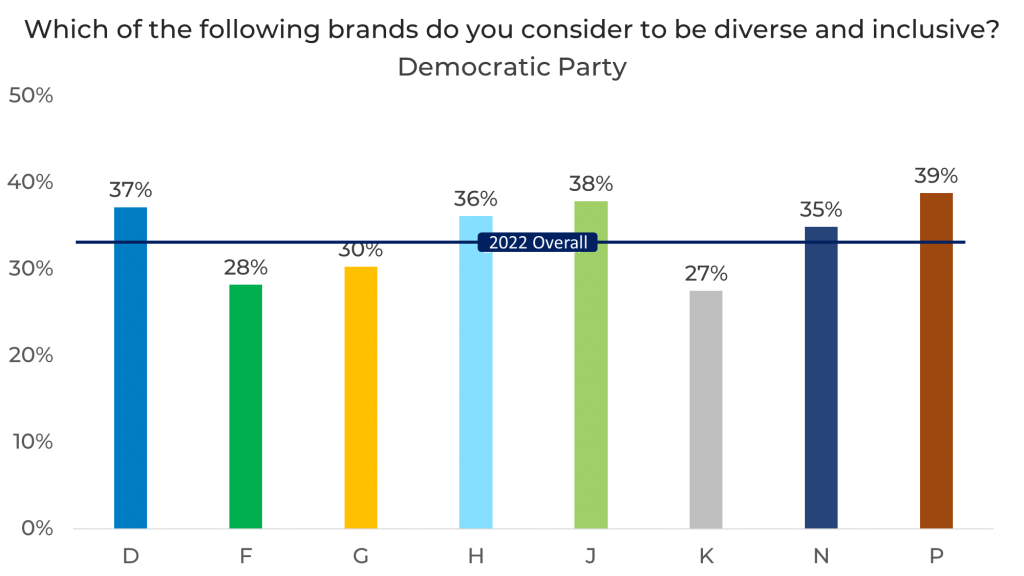
Republican Party
Age
Looking at the Republican Party by age, we see another trend where the older a respondent is, the more likely they are to consider the Republican Party as diverse and inclusive. Respondents age 65+ are 17% more likely than respondents ages 18-24 to consider the Republican Party to be diverse and inclusive.
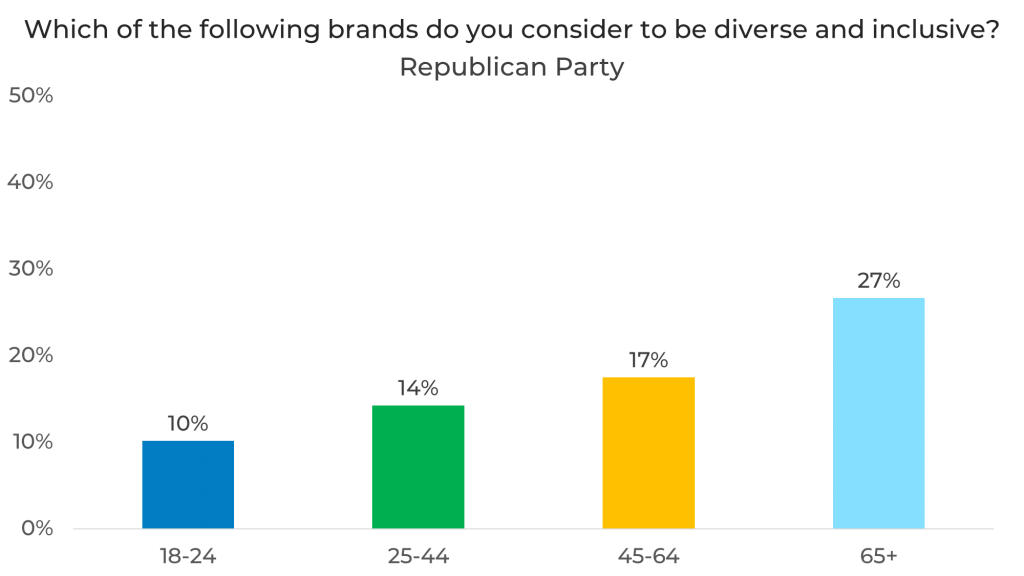
Panel
When looking at perceptions by panel, we see up to a 10% difference between panels in those who consider the Republican Party to be diverse and inclusive. Panel N is 7% higher than the 2022 overall percentage of people who believe the Republican Party is diverse and inclusive. Panel G is 3% lower.
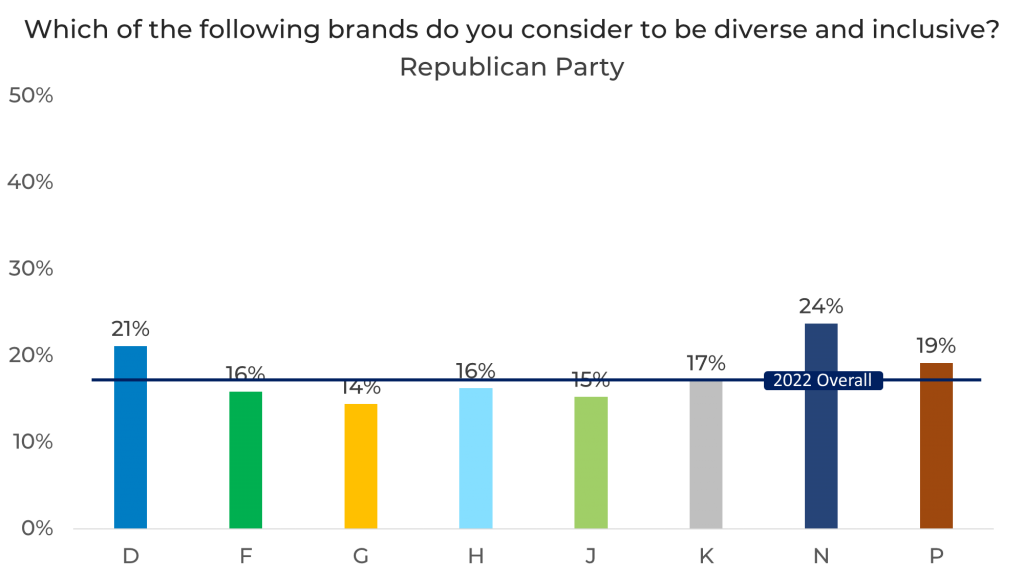
NFL
The NFL rated the second highest for being considered diverse and inclusive.
Age
When looking at perceptions of the NFL by age, we see that the older a person is, the more likely they are to consider the NFL to be diverse and inclusive. People that are 65+ are 12% more likely to consider the NFL diverse and inclusive than those age 18-24.
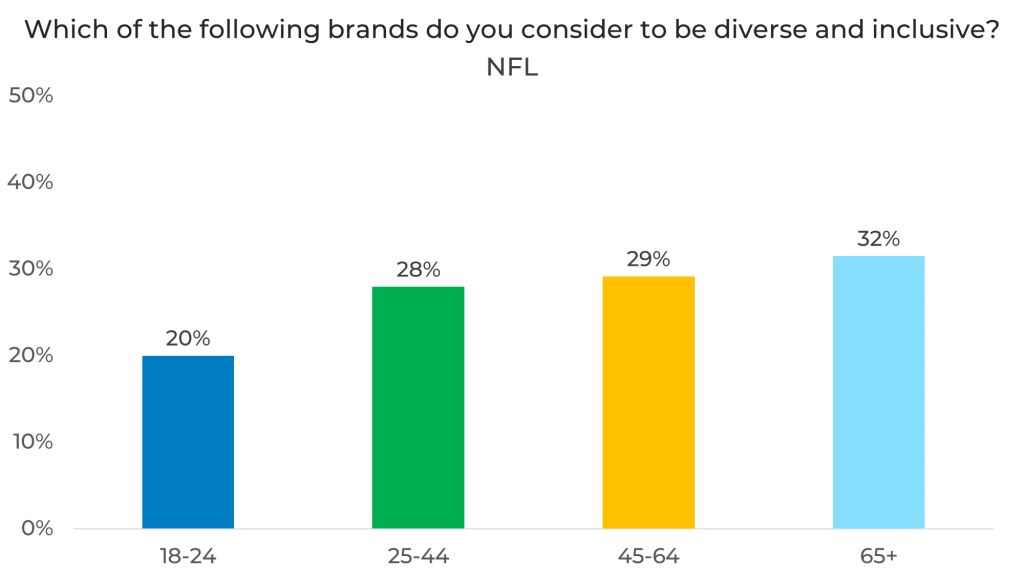
Gender
When it comes to gender, males are 8% more likely than females to consider the NFL to be diverse and inclusive. At 33%, males are 5% higher than the average percentage (28%) of people that consider the NFL to be diverse and inclusive.
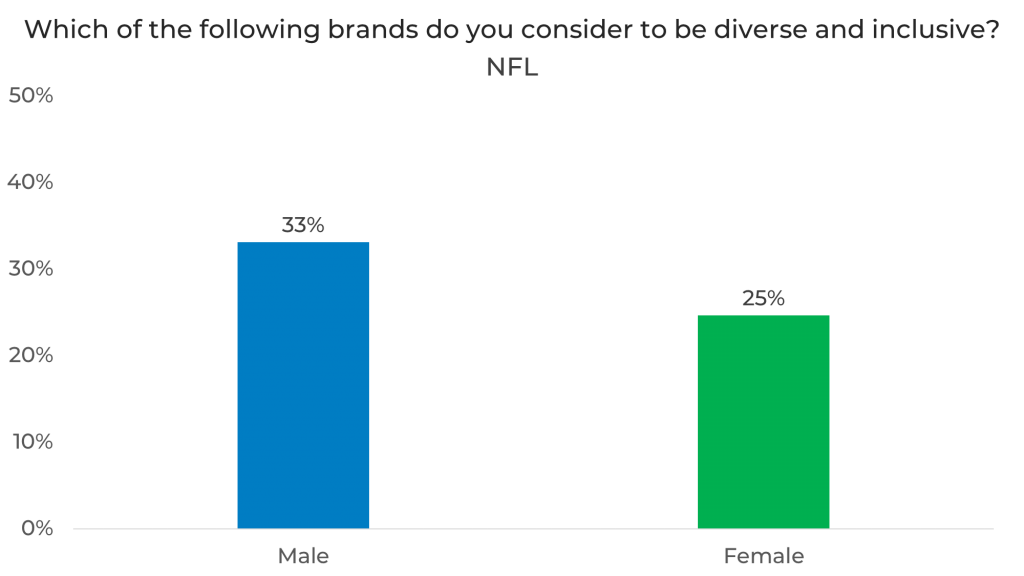
Panel
When analyzed by panel, there is up to a 9% difference between panels. Further, 28% of people overall consider the NFL to be diverse and inclusive. Here, we see differences up to six percentage points higher and three percentage points lower than the overall.
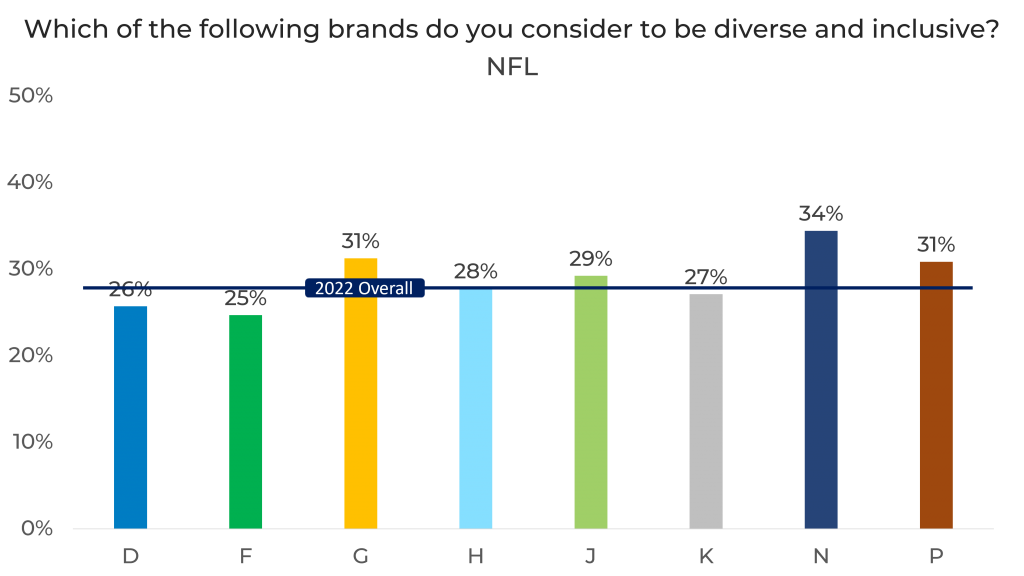
The New York Times
The New York Times was the third highest brand considered to be diverse and inclusive overall.
Age
When looking at perceptions of the New York Times by age, we see that the older a person is, the more likely they are to consider the New York Times diverse and inclusive. People age 65+ are 8% more likely than those age 18-24 to consider the NY Times diverse and inclusive.
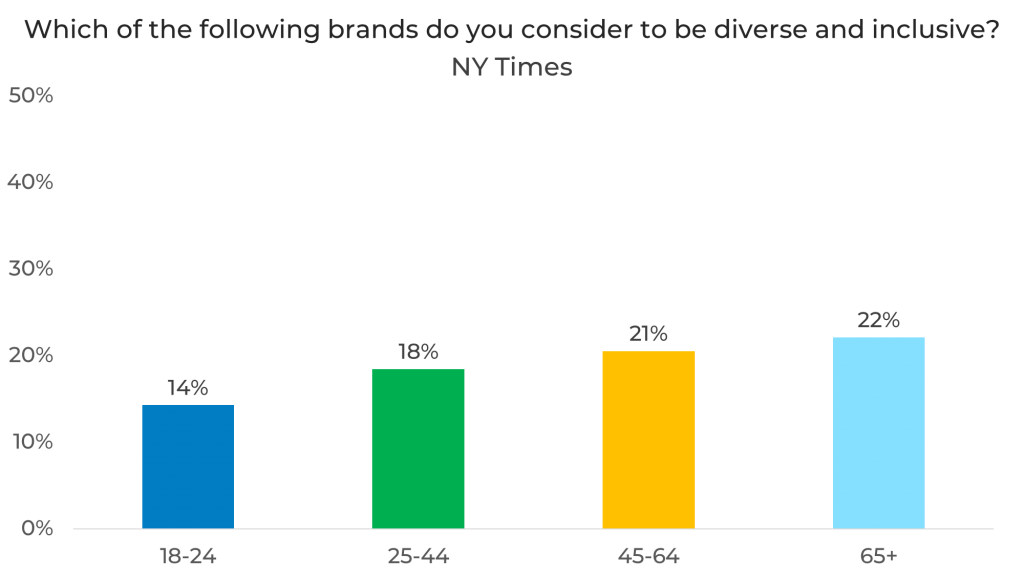
Income
We also looked at perceptions of the New York Times by income. We see that the higher a person’s annual income, the more likely they are to consider the New York Times to be diverse and inclusive. There is a 7% difference between those with incomes under $30,000 and those with incomes of $100,000 or more.
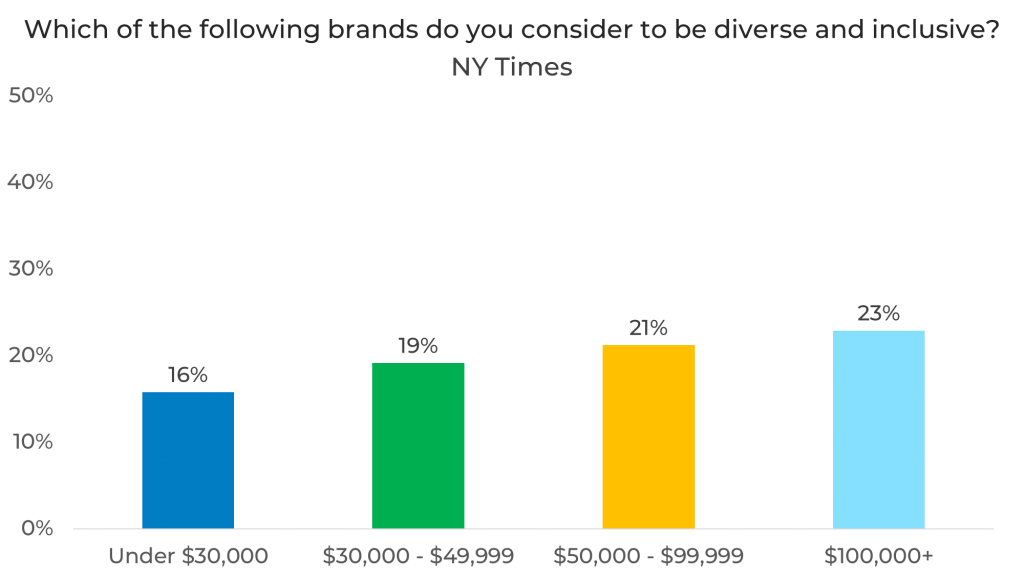
Panel
When it comes to panel, we see up to a 9% difference between panels. Here, we also see that Panel P has the highest percentage of people who consider the New York Times to be diverse and inclusive. Panel P consistently rates brands higher for diversity and inclusion. As an example, this might be because Panel P has more respondents age 65+ who consider brands to be more diverse and inclusive than other age groups. Differences in panel makeup can skew your data, affecting the reliability of your survey results.
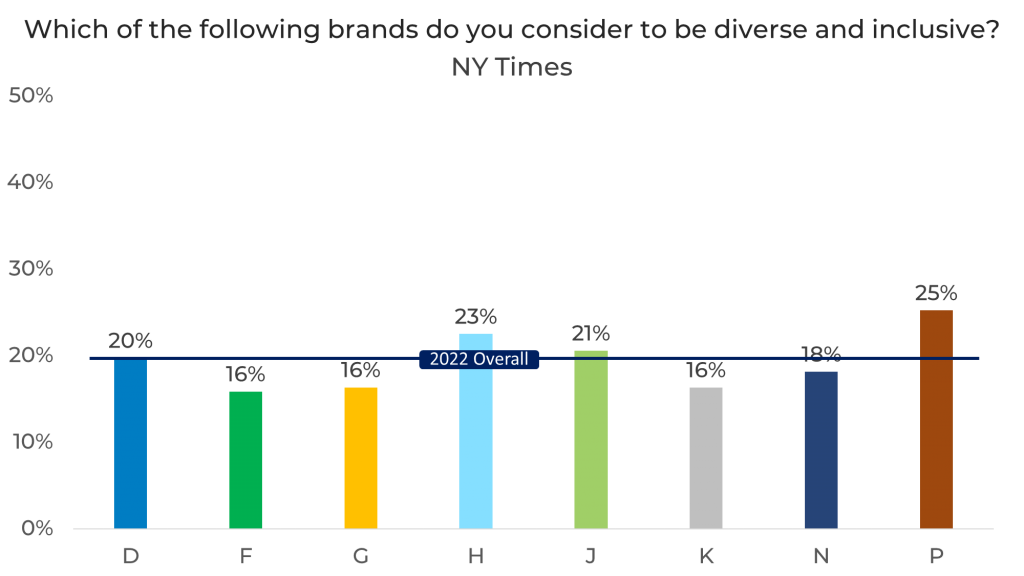
NRA
The NRA was the least likely to be considered a diverse and inclusive brand out of the brands we asked about.
Age
When looking at the NRA by age, we see that the older a person is, the more likely they are to consider the NRA to be diverse and inclusive. This is in line with what we have seen with other brands where the older a respondent is, the more likely they are to consider the brand diverse and inclusive. People that are age 65+ are 13% more likely to consider the NRA to be diverse and inclusive than those age 18-24.
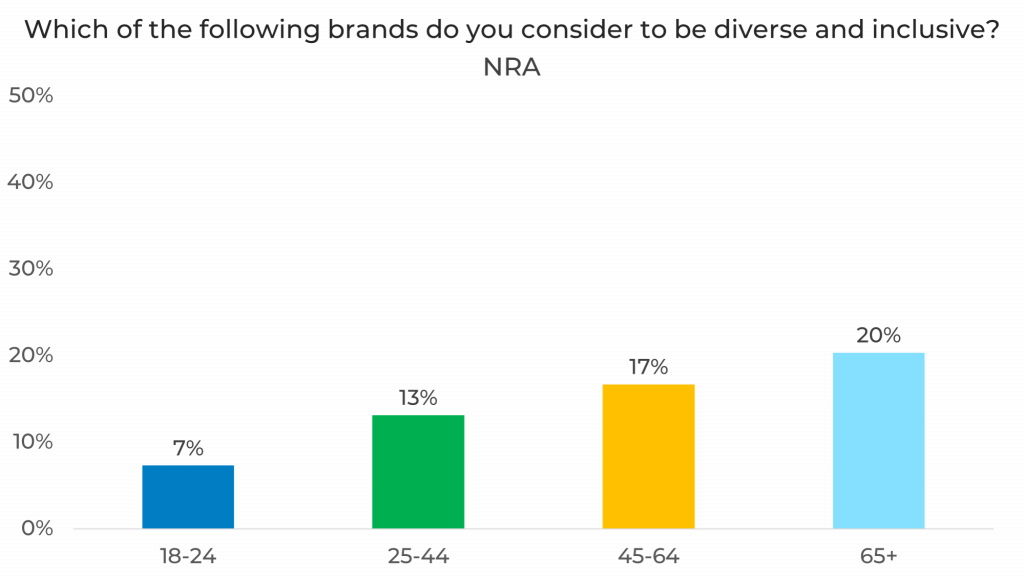
Panel
Finally, we looked at perceptions of the NRA by panel. There is up to an 8% difference between panels. We know that overall, 15% of people consider the NRA to be diverse and inclusive. Here we see differences up to five percentage points higher and three percentage points lower. These differences can have a significant impact on your data.
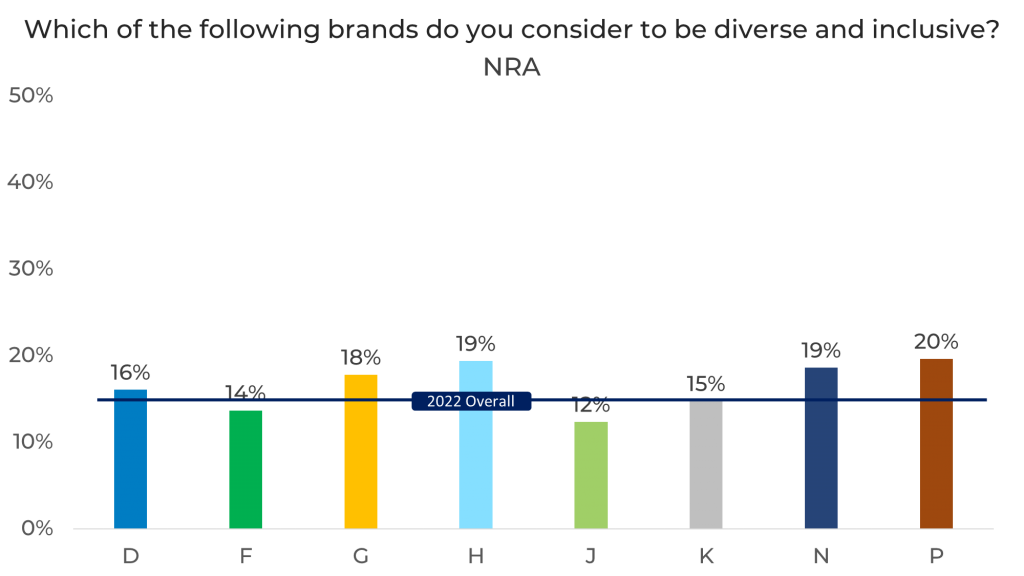
As we see in this blog, brand perception can vary by both demographic and panel. That is why strategic sample blending is the best practice to ensure your data is safe from sample bias and is consistent over time. Strategic Sample Blending allows you to trust that any changes are due to shifts in the market, not inaccuracies in your data. To learn more about the importance of diversity in sample and how panels are different, download your copy of The Sample Landscape: 2022 Edition.

